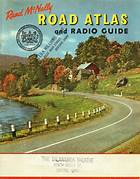In 1954, the United States witnessed a significant technological advancement that would revolutionize the way people traveled and paid for road usage—the introduction of automatic road tolls. This innovative system marked a departure from traditional toll collection methods, paving the way for increased efficiency, reduced traffic congestion, and a more streamlined transportation infrastructure. During this era, the American landscape was rapidly evolving. The post-World War II period brought about unprecedented economic growth and suburbanization, leading to a surge in road construction to accommodate the expanding population and the rise of automobile culture. As more people hit the roads, traditional toll collection methods, primarily manual toll booths, proved to be inefficient and contributed to traffic bottlenecks, especially in densely populated areas. The advent of automatic road tolls in 1954 aimed to address these challenges by introducing cutting-edge technology. Instead of relying on toll booth attendants to manually collect fees, the new system employed electronic sensors and mechanisms to automatically deduct toll charges as vehicles passed through designated toll points. This not only reduced the need for toll booth infrastructure but also significantly improved traffic flow, contributing to a more seamless and efficient transportation network. One of the pioneering implementations of automatic road tolls during this time was the introduction of electronic toll collection lanes on the Pennsylvania Turnpike. This marked the beginning of a transformative era in transportation management, as the technology gradually spread to other states and highway systems across the country. The automated toll collection system was made possible through the use of emerging technologies, such as radio-frequency identification (RFID) and microwave communication. Vehicles equipped with special transponders could pass through toll gates without stopping, while toll charges were automatically deducted from prepaid accounts. This not only reduced travel time for motorists but also minimized the environmental impact of idling vehicles at toll booths. The widespread adoption of automatic road tolls in 1954 had far-reaching implications for the nation's infrastructure. It not only improved the efficiency of toll collection but also allowed for more accurate traffic data collection, enabling better planning and management of road networks. The technology laid the foundation for future advancements in transportation systems, setting the stage for the integration of smart technologies in modern infrastructure. Looking back, the introduction of automatic road tolls in 1954 stands as a testament to the United States' commitment to embracing technological innovation to meet the evolving needs of a growing and mobile society. The success of this initiative not only improved the overall travel experience for Americans but also served as a catalyst for further advancements in transportation technology that continue to shape the way people move and interact with their surroundings today.
1954 U.S.A. – – Automatic Road Tolls
